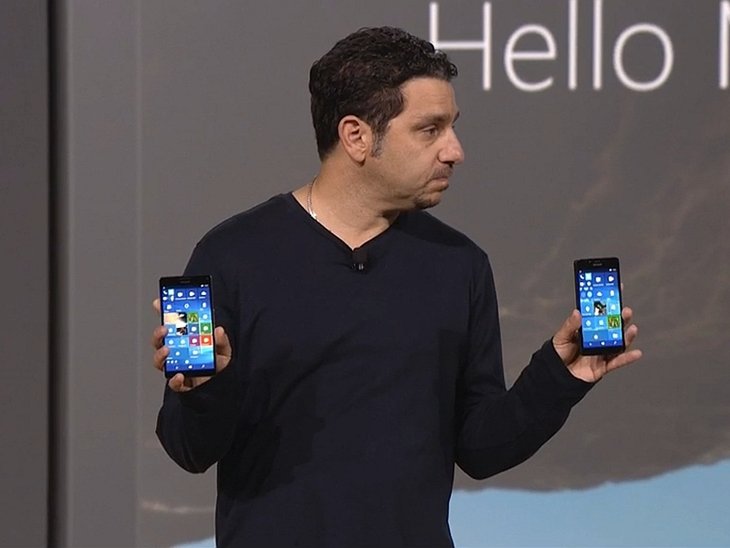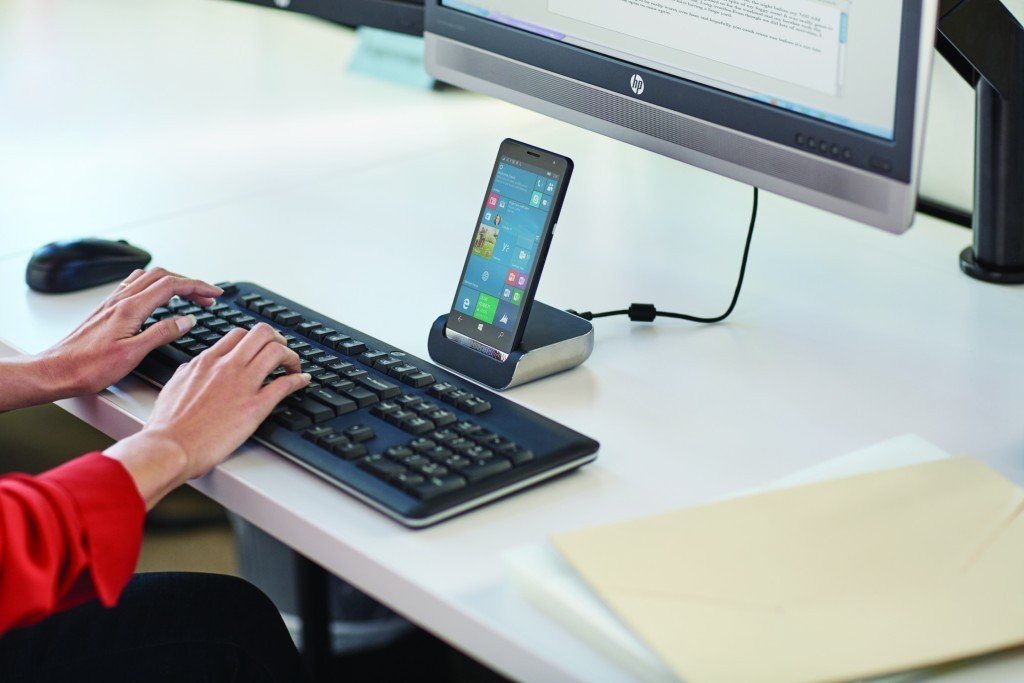No, Windows phone isn't dead — and it may never die
Whenever Gartner releases its latest smartphone market share numbers, the expected decline in Windows phone market share is followed by the expected, "Windows phone is dead!" mantra.

With just 0.3 percent share in Gartner's most recent report, things almost couldn't look worst for Windows phone. Blackberry's 0.0 percent (with only 200,000 phones sold last quarter), however, is worse and seems to be the inevitable direction in which Windows phone is headed.
At this point, some of you having read the title may be ready to head off to comments to share your thoughts. But keep reading. I challenge you to a more mature discussion, and you're going to need to read more than the headline.
So given Windows phone's current state, is the platform dead? That depends on who you ask.
Common ground

I recently watched the movie, "Arrival" which is based on a sci-fi short story called, "Story of your life." In the film, aliens come to earth positioning 12 ships in different locations around the planet. The beings in the ships have a completely different language and language structure, both verbal and written, than humans.
The central character in the story is a human linguist whose role is to set the stage for a dialogue between the species. To do so, she must establish common ground, ensuring that both species understand and agree upon the meaning of certain words and concepts. In essence, to have a meaningful and productive conversation she had to make sure everyone was on the same page.
The same must occur when we address whether or not Windows phone is dead.
Dead or alive?
The status of Windows phone is a polarizing topic. Many fans are passionate, and any allegation that their beloved mobile platform is dead sends them into a well-rehearsed defense.
All the latest news, reviews, and guides for Windows and Xbox diehards.

Many critics are equally passionate, and Microsoft's consistently diminishing share fuels these critics' relentless offensive against the platform that has been reported dead several times a year for several years now.
The first thing we must establish as the fundamental underpinnings of this conversation is, "What is dead?" First, as you know, since we are talking about an inanimate object, a platform, that has never actually "lived," the terms dead and alive are applied in a more figurative sense than an actual one. With that said, the word alive means: living, not dead; alert and active; animated.
Dead means no longer active or animated.
Conversely, the word dead means: no longer alive, not alert and active; animated.
When we look at the definitions of these two words, we must think about the object to which we are applying them. Therefore, we must also agree upon what Windows on a phone is. Finally, what aspects of the inanimate Windows on phone platform are sufficiently congruous to qualities of life, to reflect "alertness, activity and animation?"
Signs of life
Emanating from Microsoft's leadership are both vision and activity in relation to its admittedly troubled mobile efforts.
Microsoft's Dona Sarkar heads the Windows Insider Program and actively releases mobile builds to Insiders.

Windows Chief Terry Myerson has expressed Microsoft's commitment to mobile.

The company's CMO Chris Capossela has confirmed Microsoft's commitment to mobile through partnerships and Redmond's category-defining hardware strategy in relation to mobile.
Finally, CEO Satya Nadella shared an "ultimate mobile device" vision.
Clearly, these few examples from Microsoft's leadership, reveal that the company has a vision for and is actively involved in developing Windows on phone. The level of that commitment can (and I'm sure will) be debated, and their failures of the past can (and I'm sure will) be rehearsed.
Empirically speaking, however, Redmond is developing the platform, along with the Universal Windows Platform (UWP). Like a living thing, it is progressing, as further revealed in the forward-looking, Discover what's next for Windows 10 Mobile video from Microsoft's 2016 Ignite Conference below.
Objective observation reveals vision, development and use of Windows on phone.
Microsoft partners including Alcatel, HP and WhartonBrooks have invested millions of dollars in and embrace Windows phone. Here again, the level of success with those OEMs that have and continue to embrace Windows on phone can be debated.
What can't be refuted is that they have and are investing their resources as part of a business strategy to use the Windows platform as part of their mobile strategy.
Not yet thriving, but still alive

Finally, a host of fans (though shrinking) are actively using Windows on phone. The Windows Insiders among this user base engage in active communication with the builders of the platform. Through feedback, via official channels and social media, Windows on phone is being developed in "real time." The progress is visible as interactions are readily observable on social media and as blog posts alert of the changes in new builds.
Clearly, objective observation of the collective examples above leads us to an undeniable conclusion that "Windows on phone" has more in common with the definition of alive than dead.
Even the snarky, "brain dead but on life support" analogy some like to use may not hold up. When an individual is brain dead they cannot consciously respond to external stimuli. Following the critics' analogy through, Insiders' feedback is like external stimuli to the platform, and the responses of fixed bugs, addressed concerns, added features and more are "conscious responses" from the brain, or the Microsoft employees working on the platform. Is the platform in an unhealthy state? Yes. Is it dead? Obviously not.
Windows on phone rose and fell but never died

Though Microsoft's Windows-on-phone strategy has transitioned through various iterations over time, the over-arching platform never died. The central theme since its inception has always been to bring Windows to a pocketable telephony-enabled form factor. Therefore "Windows on phone" can mean any form of pocketable, telephony-capable device.
Unfortunately, the unceremonious failure of Microsoft's efforts at various stages of this vision composes a sad history that many use to point to a supposed inevitable future of more of the same. Many critics at this stage in its lifecycle claim Windows on phone is dead (something that has never historically occurred) rather than a failed iteration and transition to the next for which there is a precedence.
Windows on phone has struggled over the years but has never died.

Pocket PC, Windows Mobile and Windows Phone were all phases of Microsoft's Windows on phone vision on the path to OneCore that Redmond hoped would succeed, but which ultimately failed before transitioning to the next iteration. Windows 10 Mobile is the latest Windows on phone OS, and unlike its predecessors, it shares the same core as Windows desktops. Windows 10 Mobile, therefore, is Windows and is consequently under consistent development as part of UWP. Therein lies further evidence that Windows on phone isn't dead.
Furthermore, Windows 10 on ARM suggests that the Surface "phone" will have full Windows. If so, Microsoft's Windows on phone vision will be fully realized. The consistent progression of the Windows on phone vision, from Pocket PC to Windows 10 Mobile and potentially to full Windows on an ultramobile Surface, reflects a continuity of the Windows on phone story that, though troubled, has never died.
Windows on phone may live on as full Windows 10 on ultramobile PCs

Finally, because Microsoft's ultimate mobile device strategy reflects a vision to redefine the PC and push it into the smartphone space, it is necessary to address the use of the word "phone." If my analysis that Microsoft will be positioning an ultramobile Surface PC with telephony is accurate (which I first suggested in January 2015 and revisted in November of the same year), the Windows on phone strategy will be realized on a pocketable PC. Though the word phone is used, the spirit of the Windows on phone strategy has always included Windows on a pocketable, telephony-enabled device. Microsoft's Terry Myerson's words are consistent with this assessment:
…both cellular connectivity and ARM processors have a role in the technical landscape of the future. So we're going to continue to invest in ARM and cellular. And while I'm not saying what type of device, I think we'll see devices there, Windows devices, that use ARM chips. I think we'll see devices that have cellular connectivity. Sometimes, when you're investing into growth it's easier, but when you're investing for technical strategy or things like that, sometimes people can question it ...

Myerson's statement clearly points to the importance of Windows 10 Mobile as a technical investment for the continued development of cellular and ARM devices.
Though there are numerous paths Microsoft can take with Windows 10 Mobile, this may suggest that Windows 10 Mobile will eventually be subsumed by full Windows 10 on ARM-based, cellular-capable ultramobile PCs.
Full Windows may replace Windows 10 Mobile.
If so, the eventual absence of Windows 10 Mobile on a device, as Microsoft's Windows-on-phone vision progresses, would not be without precedence. Windows Mobile faded from devices as Window Phone replaced it. Windows 10 Mobile did the same to Windows Phone.
As long as Windows lives so does Window on phone
An interesting point to consider is that the introduction of full Windows 10 on an ultramobile PC designed to overlap the smartphone space won't have the same, "beginning with zero market share" challenge Windows Phone had in 2010. Microsoft's category-defining ultimate mobile device will run full Windows 10 and will join the currently 400 million other devices that also use the OS. This may be why Microsoft seems unmoved by Windows phone market share approaching zero percent.
Windows 10 ultramobile PCs will join 400 million other Windows 10 PCs.
As we look at the history of Windows on phone, its admittedly current dismal state (with Windows 10 Mobile), as well as the Windows-on-phone ultramobile PC vision Microsoft is working toward (full Windows on ARM), it's clear that Windows on phone is not dead.

Will Microsoft incorporate mixed-reality, inking and other innovations in its ultimate mobile device? Whatever the final product, if Microsoft is successful, the ultramobile Surface and third-party ultramobile PCs Microsoft partners may build (as they did 2-in-1s) will be category-defining Windows 10 devices. As such they will benefit from the innovations that are part of the platform, as well as the breadth and scope of Windows, as they push Microsoft's enduring Windows on phone vision forward.
Windows on phone is not dead, and ultramobile PCs running full Windows are why the concept of Windows on phone may never die.
Following the story
Windows phone isn't dead
- Microsoft's Surface phone should be much more than just a 'phone'
- If Microsoft doesn't kill at BUILD 2017, the Surface phone may be dead on arrival
- Is early 2018 too early for a Surface phone?
- Will Samsung beat Microsoft to market with an ultimate Mobile device?
- Did Microsoft give us a glimpse of its Surface phone vision
Smartphones are dead
The untold app gap story
Windows Mobile and the enterprise
- I'm a Windows phone fan in an iPhone/Android world. Why? Microsoft has it going on!
- What Android and iPhone users need to know about Windows phone
The Surface Phone

Jason L Ward is a Former Columnist at Windows Central. He provided a unique big picture analysis of the complex world of Microsoft. Jason takes the small clues and gives you an insightful big picture perspective through storytelling that you won't find *anywhere* else. Seriously, this dude thinks outside the box. Follow him on Twitter at @JLTechWord. He's doing the "write" thing!

